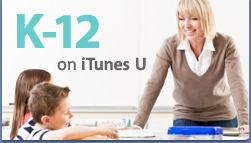 Much of our day was spent reviewing or learning all of the amazing applications Google has available for our use: Search, Reader, Docs, Sites, Blogger, iGoogle, Earth, Sketch Up and Maps. Most of these I will be blogging about on my own blog when I deliver professional development. But I want to share with you my favorite fun thing I do with my Google account = iGoogle. Check it out.
Much of our day was spent reviewing or learning all of the amazing applications Google has available for our use: Search, Reader, Docs, Sites, Blogger, iGoogle, Earth, Sketch Up and Maps. Most of these I will be blogging about on my own blog when I deliver professional development. But I want to share with you my favorite fun thing I do with my Google account = iGoogle. Check it out.Google being Google, they made sure to add some fun tour time in our day. As we walked (we weren't allowed to use scooters due to insurance reasons) the city block length of the fourth floor of
 Google we walked past several micro-kitchens. They are spaced out about every 150 feet with many yummy snacks to keep your tummy happy and on task while you're at work.
Google we walked past several micro-kitchens. They are spaced out about every 150 feet with many yummy snacks to keep your tummy happy and on task while you're at work.Walking down the hall it's impossible not to notice the white boards on every wall and the write on glass of the offices. These all look like mind maps with ideas, doodles and random jots.
 Isn't that fun? I really wanted to write on one but this security guy followed us around all day, so I was afraid to tempt it. :) Here's a video to show you a little more in real time.
Isn't that fun? I really wanted to write on one but this security guy followed us around all day, so I was afraid to tempt it. :) Here's a video to show you a little more in real time. We ended our amazing day with a wonderful dinner of crab cakes and filet mignon. And we all officially earned the title of Google Certified Teacher. I hope you'll follow me as I continue on this journey and as I explore all the wealth of resources I now have to go through. I'll share it all with you soon.
We ended our amazing day with a wonderful dinner of crab cakes and filet mignon. And we all officially earned the title of Google Certified Teacher. I hope you'll follow me as I continue on this journey and as I explore all the wealth of resources I now have to go through. I'll share it all with you soon.













 Persistence and perseverance pay off.
Persistence and perseverance pay off.
 Melissa Ross and I started the second day of our FCTM conference with a session called "Reorganizing the Candi Shoppe: A Place Value Problem." The presenter of this session was Joanne LaFramenta. We started the session by creating our own definition of the phrase "place value" from a student's point of view and from a teacher's perspective.
Melissa Ross and I started the second day of our FCTM conference with a session called "Reorganizing the Candi Shoppe: A Place Value Problem." The presenter of this session was Joanne LaFramenta. We started the session by creating our own definition of the phrase "place value" from a student's point of view and from a teacher's perspective.  From there, Ms. LaFramenta explained how uses the situation of a candy shop to get students thinking about place value. For this session, she made the problems more difficult than what would be used in most elementary classrooms. Here was the question that she gave us: How can a candy shop owner keep track of his candy in a more efficient way? All candies are packaged as 8 pieces in a roll and 8 rolls into a box. One situation was to find all of the ways to organize the quantity 192 candies. After several minutes of work time, participants
From there, Ms. LaFramenta explained how uses the situation of a candy shop to get students thinking about place value. For this session, she made the problems more difficult than what would be used in most elementary classrooms. Here was the question that she gave us: How can a candy shop owner keep track of his candy in a more efficient way? All candies are packaged as 8 pieces in a roll and 8 rolls into a box. One situation was to find all of the ways to organize the quantity 192 candies. After several minutes of work time, participants  came up with a variety of ways to organize the candies in rolls, boxes, and pieces or a combination of some of the three. Some solutions that were suggested were 3 boxes or 24 rolls. I liked the idea of teaching place value in this way. It would be easy to create accommodations (extensions and easier variations) using the candy shop model.
came up with a variety of ways to organize the candies in rolls, boxes, and pieces or a combination of some of the three. Some solutions that were suggested were 3 boxes or 24 rolls. I liked the idea of teaching place value in this way. It would be easy to create accommodations (extensions and easier variations) using the candy shop model.




























